#preamplifier circuit
Explore tagged Tumblr posts
Text
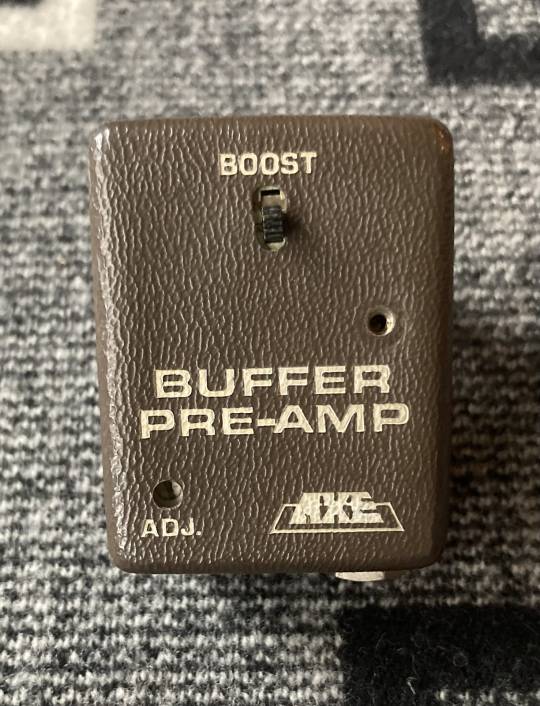





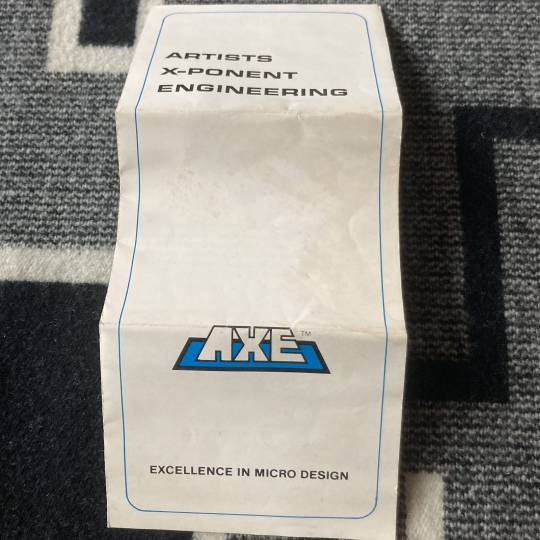

AXE - BPA-1 - BUFFER PRE-AMP
ARTISTS X-PONENT ENGENEERING
"ARTISTS X-PONENT ENGINEERING was a company based out of Menlo Park, California. It seems that the BPA-1 Buffer Pre-Amp was the first of 3 plug-in effects produced by AXE (at least from what the 1982 catalogue would indicate). Here's what said manual/catalogue tells us: -Super boost your signal up to 20 dB -Adds punch and highs lost when using effects devices -Direct instrument plug-in eliminates cord loading -Signal is ALWAYS buffered at all gains -Battery life in excess of 1000 hours AXE's Buffer Pre-Amp eliminates the loss of signal level and punch when using effects devices or driving long cords. But, unlike other preamps, AXE's Buffer section is ALWAYS in the circuit removing the effects of loading. The unit's switchable, variable gain can increase you instrument's output 10X. There are many floor-box style preamplifiers available, all with one glaring design fault: they are on the floor!!! The loading effects caused by the instrument's cord can not be resolved from this location. AXE's Buffer Pre-Amp is where it should be: in the instrument. But the REAL PLUS is that it makes a terrific, AFFORDABLE DIRECT BOX for ANY instrument. It is capable of driving up to 1000 ft. of cable without loss of signal level or highs. Every instrument with a pick-up or transducer -- guitar, bass, or keyboard -- will benefit from the use of AXE's Buffer Pre-Amp SPECIFICATIONS Bandwidth: 20Hz to 20 kHz, plus or minus 0.5dB (any gain) Maximum Output: +7 dBV THD+N: Less than 0.08% (any gain) Gain: 0 to 20 dB (variable) Equivalent Input Noise: -106 dBm (20kHz BW) Maximum Input Signal: 2.3 V (+9dBm) Input Impedance: 5 ohms"
cred: reverb.com/Fuzz Wizzard's Fabulous Gear
20 notes
·
View notes
Text
Back to Normal
I sat down and did a listen for 2 hours after the system warmed up. The EH tube is in the preamp. The AT7V body with the AT440 stylus is on the turntable.
It was a bit different. The problem with the right channel is gone. As I said yesterday tubes can fail slowly which lets you get used to that changing sound. I was happy with the voice of my system until it got really bad. Fool me once.....
It now sounds more solid, and more clear.
The albums I played were a broad selection. There was noticeably more clarity but not harshness in the treble. The 440 Stylus is what they call a microline which is a bit sharper than an elliptical. It can trace fine detail better than an elliptical shape and even a Shibata tip. It is supposed to find areas of the groove that are not as worn from playing. More treble is to be expected.
My early experience with the AT440MLa was it was hot sounding to the point of unpleasant. I later attributed that to the capacitance of the lines to the preamplifier. It is particularly sensitive. With correct loading it was much better. It also means the stylus is almost new.
I played the "audiophile" Supertramp "breakfast.." album. It sounded good, but I am not that familiar with it as I have played it perhaps two other times.
Next was one side of Quarter moon in a ten cent town. It is a hot recording, but not harsh. Again all is well, and I was able to get out of the looking for issues mode.
I played three sides (yes 3) of my 2x180@45 rpm of Fleetwood Mac Rumours. Fleetwood is a drummer. Mac is a Bass player. They have always been big in the bottom end. I think they were a bit bigger now than I recall. More umph in the new tube? The tinkling bells and cymbals Mr Fleetwood likes were very clear. The vocal tracks were obvious where they overdubbed the background singing. The also did many overdub tracks of guitar by Mr. Buckingham. Overall it was more clear than before. Any trace of that goofy channel was gone.
One of my favourite songs is "Songbird". Just a solo singer and her piano in a real theater. Though there is a guitar quietly mixed in to accent some stuff. It is a pretty nice recording with less of the pop-song-rock processing on the rest of the album.
In the second side of Dire Straits Album I noticed that the character of the percussion was different. The drummer was hitting the cymbals and the tick of the stick was prominent at each hit. I had not ever noticed that. So yes different and more detail.
I will geek out on more later.
In other news I got notice that my compatible power tubes are on the way. $120 bucks extra. That makes me think I should have modified the bias circuit as the parts are far less than the premium for the tubes. That violates the purity of the ARC design though. W.Z. Johnson would be appalled. Oh well this only needs be done every few years. The set in the Cl60 are very old.
My Tube dealer is "the tube store".
I really appreciate the friendly service. They have been very helpful. They are in Canada, but ship worldwide.
When all done and running all the tubes in my system will be Russian Electro Harmonix. Just like the factory wanted. It is getting cooler around here, I can use the extra heat.
#audiophile#high end audio#audioblr#cheap audiophile#vinyl#audio research preamp#vacuum tubes#audio Technica
2 notes
·
View notes
Text
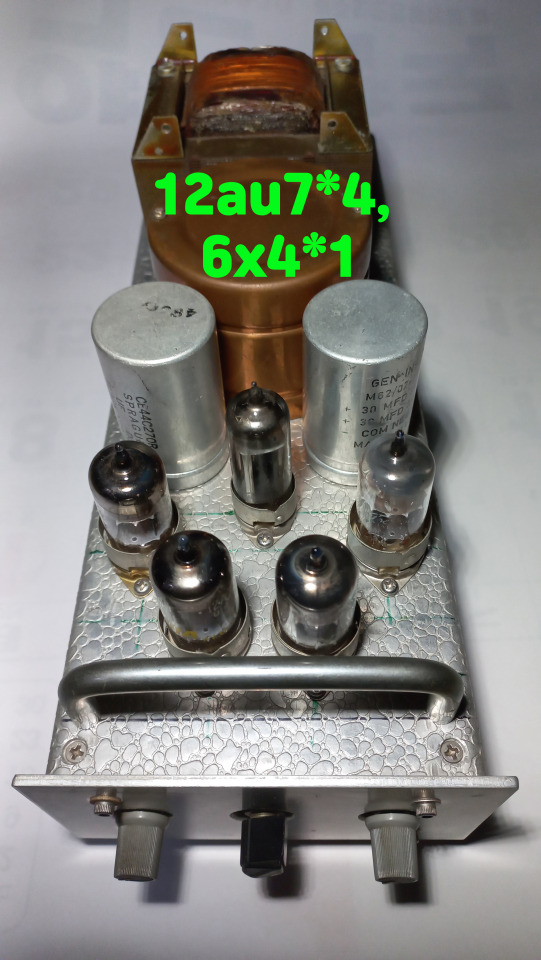
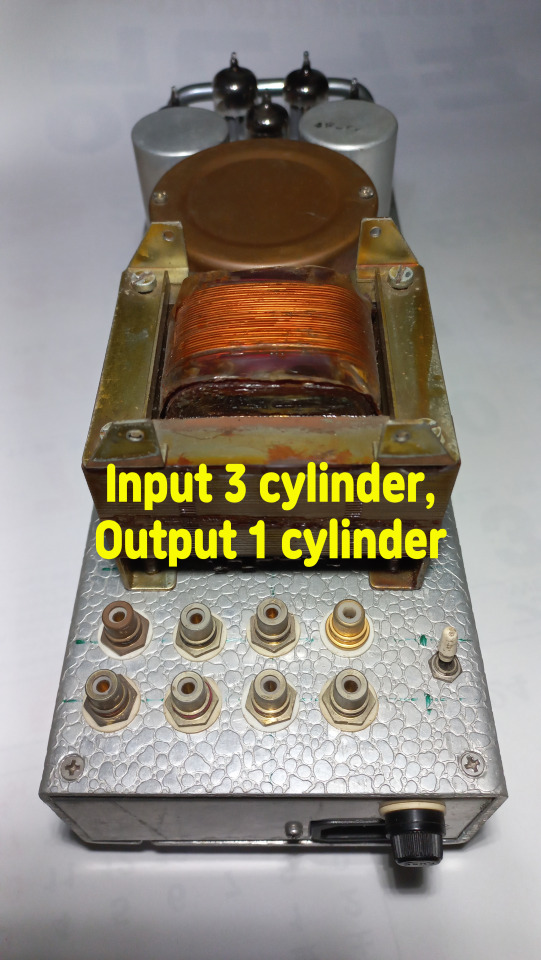
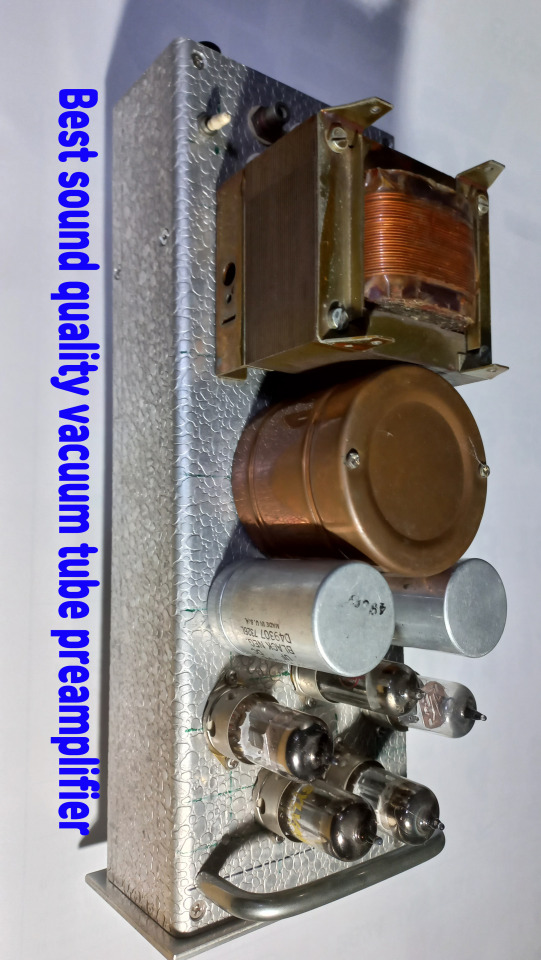
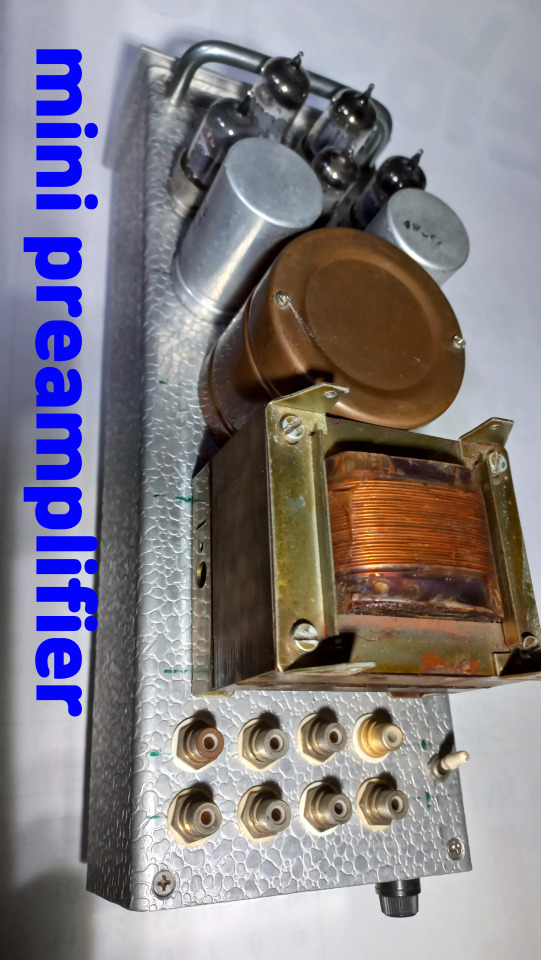

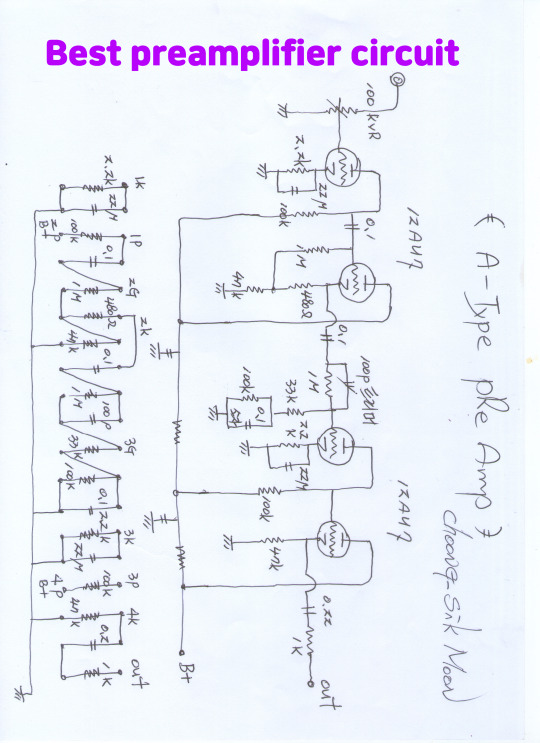
I have been making vacuum tube audio to listen to music for a long time. The preamplifier currently being manufactured will be made with 4 vacuum tubes 12au7 * 4, current tube 6x4 * 1 power supply unit, 3 input cylinders, and 1 output cylinder. I believe you will enjoy the best music. If you are making your own vacuum tube audio, I recommend you try making it. The circuit diagram is released.
7 notes
·
View notes
Text
DIY Dumble-like sounding MOSFET Overdrive

The Hermida Zendrive guitar pedal we will study, assemble and listen to today is a true masterpiece. Many say its sound is close to the Holy Grail of guitar amplification - Dumble Overdrive Special.
Other people are more pessimistic in their judgments. Still, the precise response to the picking dynamics, the Voicing tuning options, and the sheer beauty of this overdrive's sound are simply impossible not to love.
But before we study the Lovepedal Zendrive or its copy of the Landtone Phoenix song, or the Aion effects Azimuth dynamic overdrive, we'll study the evolution of the MOSFET overdrives that finally resulted in the development of this gem.
Fulltone OCD

Mike Fuller was one of the first to start using MOSFETs instead of diodes to limit the amplified guitar signal in 2004.
His Obsessive-Compulsive Drive overdrive-distortion pedal is built on a standard circuit with one dual op amp. The first operational amplifier, X1, amplifies the amplitude of the guitar signal by a factor from 8 to 463 times, depending on the position of the drive control X3. This is a 1-megohm potentiometer.

Further, through resistor R9, the signal is fed to the limiter, which comprises 2N7000 MOSFETs M1 and M2 connected in parallel. A germanium diode D1 - 1N34A is additionally included in series with M2, which makes the limiter asymmetrical and, therefore, makes more interesting sound.
A limiter in overdrives is usually included in the negative feedback circuit of an operational amplifier (i.e., in parallel with C6). Such a limiter is called a soft limiter.
And here, a hard limitation is applied: clipping sections are included between the preamplifier output of the gain section and the virtual ground - half of the supply voltage Vref, formed by resistors R4 and R7.
Virtual ground is used in the unipolar powering of operational amplifiers to amplify analog signals, such as audio signals. The guitar signal does not change from zero to plus but from minus to plus, passing through zero.
To prevent the signal from being limited to the circuit's ground, it is shifted in the plus direction by half the supply voltage.
Such hard limiting is typical for distortion pedals. But by using MOSFETs instead of diodes or LEDs, the top of the signal is not cut hard but softly rounded. Therefore, OCD can work as both distortion and overdrive.
Due to the smoothed peaks of the limited signal, the sound is highly dependent on the sound's attack dynamics. For rock and especially blues, this is very valuable. With modern metal pickups that compress the dynamic range of the signal, it can help make solos sounding more sweet.
The second operational amplifier X3 amplifies the limited signal by a factor of 3.8, correcting its timbre. Capacitors C6 and C9 prevent the self-excitation of operational amplifiers at high frequencies.
Next is a simple passive tone knob, which implies a treble leak circuit. Potentiometer X4 10 kilohms and capacitor C11 47 nanofarads are connected in the same way as on the pickguard of any electric guitar.
The Switch1 switch changes the circuit's output impedance as if the high-impedance and low-impedance pickups were switched. When it's open, you get a transparent overdrive like the Klon Centaur, and when it's closed, you can get a more aggressive sound like the Marshall Plexi.
Hermida Audio Zendrive

The Zendrive pedal's authors, Hermida audio technology (now produced by LOVEPEDAL LLC), have undoubtedly studied the Fulltone OCD thoroughly. Let's find the differences between the two circuits.
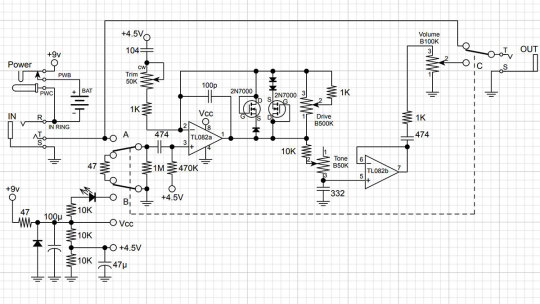
First, the limiter is included in the operational amplifier feedback, that is, between the output and the inverting input, not between the output and virtual ground. That is, here we have a soft limiter.
Secondly, one diode is added in series with each MOSFET. Clipping remains asymmetric: we have one diode in the left arm of the limiter and two diodes in the right arm.
Third, the second operational amplifier is used as a voltage repeater, aka buffer: the output is directly connected to the inverting input.
Fourth, the tone control is implemented a little differently: two OCD`s switchable resistors are replaced by a potentiometer.
And finally, the most critical, fifth difference. A potentiometer is included in the tone correction circuit between the inverting input of the first operational amplifier and the artificial midpoint.
This fourth knob, Voicing, or Character, allows you to smoothly adjust the lower frequencies in the overdrive structure over a wide range, similar to the Resonance control on many tube guitar amps.
The potentiometer is signed as a trimmer in the diagram because some pedal makers don't want to install a fourth knob on the pedal`s body. This is what Landtone did when developing the Phoenix Song Overdrive DIY kit.
The developer suggests installing the trimmer on the PCB, and to access it, you need to disassemble the pedal by unscrewing the footswitch nut and taking out the PCB.
But I will not be lazy to drill an extra hole in the pedal body and install a potentiometer with a knob, connected to PCB by wires instead of the trimmer. Because I consider this regulator simply invaluable and irreplaceable.
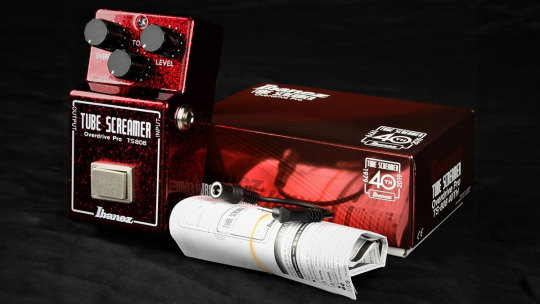
Before we get to assembly and testing, let's look at another pedal with a similar adjustment. However, it is based not on the Fulltone OCD but on the Ibanez Tube Screamer.
The Precision Drive

This is a signature pedal by Misha Mansour of Periphery, manufactured by Horizon Devices. Compared to the original Overdrive Pro TS808, the circuit adds a noise suppressor, which we will not consider, and an exciting ATTACK switch.
The Precision Drive scheme was studied and partially replicated by PedalPCB and PCB Guitar Mania. They are manufacturers of DIY kits for guitarists. Their products are called Dwarven Hammer and Collision Drive, respectively. A noise gate is not provided there, but the attack switch is implemented. This is the main difference between Precision Drive and many other overdrive pedals.
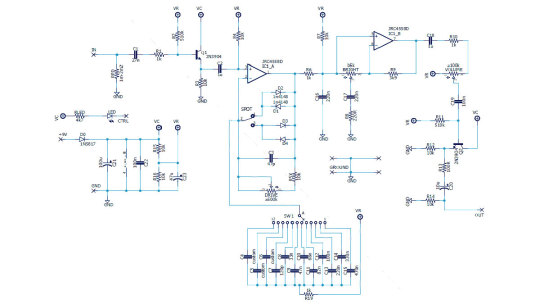
In the Fulltone OCD schematic, we saw a resistor switch at the tone shaping circuit in the output section. The Zendrive has a variable resistor in the preamp's RC circuit which is controlling the overdrive structure.
Precision Drive has a constant resistor in the same place, between the inverting input of the overdrive section operational amplifier and the virtual ground, but the capacitors are switched.
This is the same thing: we change the time constant of the RC circuit, which adjusts the audio signal's frequency spectrum. At the same time as the time constant, the complex impedance changes, thus the gain.
A resistor is a resistance to both DC and AC current. At the same time, a capacitor is only resistant to AC current because DC current does not flow through a capacitor. Since DC current does not flow through our RC circuit, there is no difference between adjusting the resistance and switching the capacitance.
But the active/reactive ratio affects the circuit's Quality factor, i.e., its resonance. It's no coincidence that the knob on guitar amplifiers, which adjusts the same frequencies as our potentiometer or switch, is often called RESONANCE. And it is used to adjust to the resonance of the electromechanical system - the loudspeakers in the cabinet, along with the masses of air in and around it.
The reactive impedance accumulates energy and gives it away, except for losses due to dielectric recharging and magnetizing the magnetic core in inductors. This is why coreless inductors are often used in high-end equipment, so-called air inductors. They weigh a lot, take up a lot of space, and are expensive because copper is more expensive than steel. But these are the laws of physics on which technology is based.
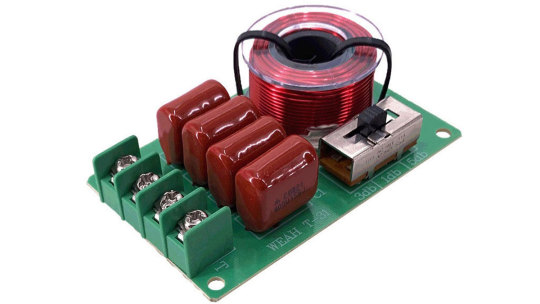
Unlike reactive impedance, active resistance converts electrical energy into heat, thus reducing the Q-factor. In some cases, it is necessary and useful. In others, it is harmful. Or it simply creates a unique sound character.
That's why switching capacitors and turning the potentiometer knob in the feedback circuit of an audio frequency amplifier is almost the same thing, but not quite. And it's great that there are such different variants of guitar overdrive pedals!
Landtone Phoenix Song Overdrive
Now you can hear how my Zendrive from the Landtone OD-1 kit sounds, with a Seymour-Duncan SH4 humbucker on a Gibson MM Explorer guitar, into an Orange MT20 with a Torpedo Captor X. And see how I assembled the pedal and also a kitten walking around the table and prancing around.
youtube
I liked the pedal, especially its fourth magic Voicing knob, which does things to the sound that other tone controls can't. I also liked the bird on the body. Because I love birds. And in the music world, the decoration of instruments and hardware plays no small role because it inspires creativity. And the fact that the pedal is assembled by my hands also warms my soul and creates inspiration.
3 notes
·
View notes
Text
Price: [price_with_discount] (as of [price_update_date] - Details) [ad_1] Description: Amplifier Board‘: Preamplifier Board Surrounding Balance Audio Preamp B Tone Conrtol Stereo Pre Amplifier Board.Hifi Sound‘: Preamplifier Board Makes Clear And Increase The Intensity Of , Freely Enjoy Clear And Natural Music.Features‘:Preamplifier Preamp Tube Board With Stable Performance, High Conversion Rate And Strong Drive Ability.Easy To Use‘: This Preamplifier, Play And Plug. Let You Enjoy Fun!Application‘: Amplifier Board Can Be Used With A Post Amplifier Or An Active Speaker, Suitable For Audio Equipment, Instruments, Control Circuits And Even Channel Amplifier. Specification: Material: PcbPower: Dc12V-16V Size Chart: 11Cmx7.5Cmx3.5Cm/4.33Inchx2.95Inchx1.38Inch Package Includes: 1 Preamplifier Board Note: Please Allow Slightly Errors Due To Manual Measurement And Different Monitors. Amplifier Board‘: Preamplifier Board Surrounding Balance Audio Preamp B Tone Conrtol Stereo Pre Amplifier Board Hifi Sound‘: Preamplifier Board Makes Clear And Increase The Intensity Of , Freely Enjoy Clear And Natural Music Features‘:Preamplifier Preamp Tube Board With Stable Performance, High Conversion Rate And Strong Drive Ability Easy To Use‘: This Preamplifier, Play And Plug Let You Enjoy Fun!Application‘: Amplifier Board Can Be Used With A Post Amplifier Or An Active Speaker, Suitable For Audio Equipment, Instruments, Control Circuits And Even Channel Amplifier Size - 11Cmx7.5Cm; 4.33Inchx2.95Inch As Per Image Material: Pcb Package Includes:1 Preamplifier Board Kindly Refer The Product Description Before Buying The Product. [ad_2]
0 notes
Text
DCG3 Headphone Amplifier and Preamplifier: High-End Analog Performance with Premium Components
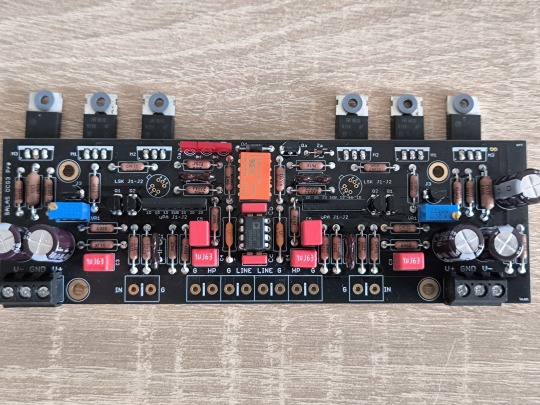
If you're in search of a reference-class headphone amplifier and preamplifier, the DCG3 should be at the top of your list. Designed with a clear focus on sonic purity and engineering excellence, the DCG3 delivers outstanding audio performance, thanks to a carefully selected array of audiophile-grade components and a robust circuit design.
Audiophile-Grade Input Stage with NEC uPA68H JFETs
At the heart of the DCG3’s input stage is the dual JFET uPA68H from NEC, a high-performance device known for its clean, musical sound signature that closely resembles the legendary 2SK170. The biasing for the JFETs is handled by a BF256 operating at approximately 5mA, ensuring optimal linearity and thermal stability.
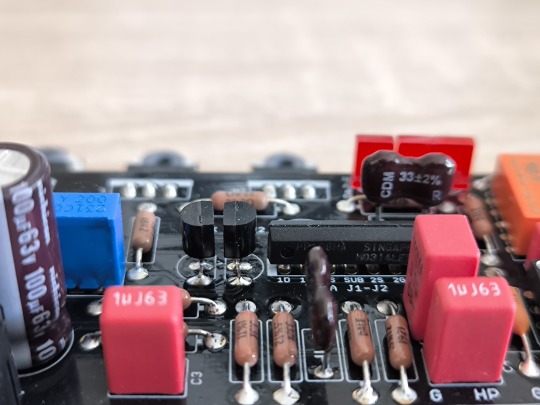
Premium Build with High-End PCB and Components
The DCG3 is built on a black, 2mm thick PCB with 2oz copper for enhanced current handling and thermal performance. Measuring 160 x 50 mm, the board layout is optimized for minimal signal path length and maximum shielding from noise.
Only the best components were selected for the DCG3 to ensure superior sound quality and long-term reliability:
Vishay Dale CMF series resistors for critical signal paths and CPF for power handling
Nichicon electrolytic capacitors for smooth, noise-free power delivery
WIMA film capacitors known for their precision and low distortion
Cornell Dubilier silver mica capacitors, revered for their exceptional stability and clarity in audio circuits
Advanced Output Section with Delayed Relay Protection
The DCG3 features both line output and headphone output, each protected by a miniature NEC EA2-12NJ relay that provides delayed engagement to eliminate pops and protect connected gear.
An integrated DC servo circuit based on the AD823 operational amplifier eliminates any DC offset at the output, further improving safety and sound fidelity.
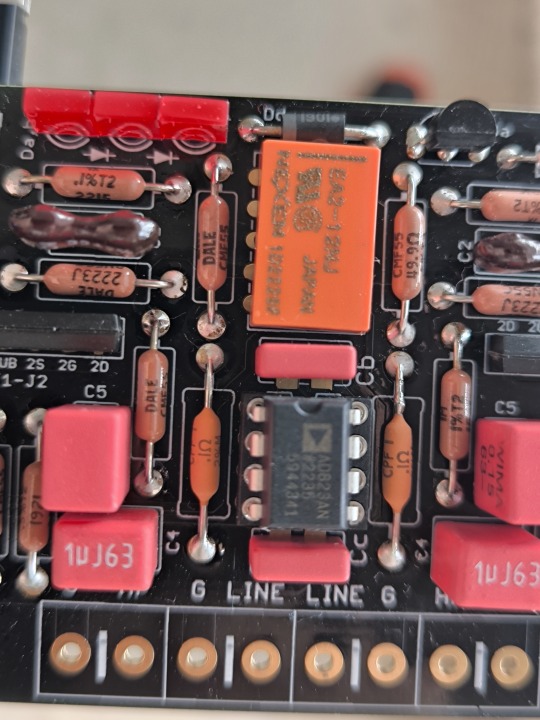
Output Stage with Vishay MOSFETs and Precision Design
The output stage utilizes robust Vishay IRF9610 and DN2540 MOSFETs, chosen for their linear performance and durability. The amplifier operates at a gain of 3x, offering just the right level of amplification for most line-level sources and headphones.
The quiescent current is set to 120mA, providing ample headroom and drive capability for a wide range of headphones, while maintaining excellent thermal behavior.
Exceptional Noise Performance and Low Output Impedance
The DCG3 achieves an impressive -120 dBV noise floor, making it virtually silent in operation. Output impedance is optimized for both outputs:
Line out impedance: 50 ohms
Headphone out impedance: less than 0.1 ohm
This ensures excellent damping factor and tight bass control, especially for low-impedance headphones.
Power Supply: SSLV1.3 UltraBiB Shunt Regulator
To match the sonic performance of the DCG3, it is powered by the SSLV1.3 UltraBiB shunt regulator, a low-noise, high-speed power supply known for its excellent transient response and ultra-clean output. This regulator was covered in detail in our previous article, and it plays a crucial role in enabling the DCG3 to reach its full potential.
Conclusion: A True Reference-Grade Headphone Amplifier
The DCG3 headphone amplifier and preamplifier is a testament to precision analog engineering. With its carefully matched components, optimized circuit design, and impeccable power delivery, it is ideal for demanding audiophiles who seek transparent, dynamic, and musically engaging sound.
Whether used as a standalone headphone amp or integrated into a high-end stereo system, the DCG3 delivers exceptional clarity, low distortion, and true reference performance.
0 notes
Text
#Vishay Intertechnology#signal quality#efficiency#communication#powerelectronics#powermanagement#powersemiconductor
1 note
·
View note
Text
#Vishay Intertechnology#home automation#IRRemote#Preamplifier#SmartDevices#ConsumerElectronics#HomeAutomation#NextGenTech#electronicsnews#technologynews
0 notes
Text
High-Performance Mono Amplifiers & Preamplifiers for Audiophiles
Experience exceptional sound with Accustic Arts. We are your partner for high-quality audiophile audio components. Our range includes everything you need for a perfect sound experience, from preamplifiers to CD players and integrated amplifiers. Let our experts advise you and discover how you can take your audio system to the next level. Discover our selection of high-quality preamplifiers, renowned for their precise sound reproduction and outstanding performance—ideal for audiophile demands and fine-tuning your hi-fi system. Enjoy your music in the best quality with our first-class CD players. Mono amplifier A mono amplifier only supports amplification of a single channel. Stereo reproduction requires two channels, so a single stereo amp or two mono amps could be used. A mono block amplifier is a single unit ("block") responsible for amplifying a single channel ("mono"). They are larger, heavier, and more expensive per channel. Our mono block amplifier provides more amperage because it isn't sharing power across multiple channels, allowing it to deliver more focused and efficient power to your speakers. Preamplifier audio Our preamplifier audio, also known as a preamp, is an electronic amplifier that converts a weak electrical signal into an output signal strong enough to be noise-tolerant and strong sufficient for further processing or for sending to a power amplifier and a loudspeaker. Without this, the final signal would be noisy or distorted. It is typically used to amplify signals from analog sensors such as microphones and pickups. Stereo power amplifier Stereo power amplifier elevates the audio signals from a device when connected. Significantly less energy is used to form the sound and give the output signals from the device to a speaker. Amplifiers make radio voices audible to humans; without them, it would feel like a lost murmur to humans. A power amplifier is an electronic circuit whose output is proportional to its input. It is used to provide and absorb actual power from the P-DUT based on the references provided by the DRTS.
Read More Resources
Review PREAMP V in stereo magazine
ACCUSTIC ARTS PREAMP V PHONO in Lite Magazine
#hifi headphone amplifier#audio power amplifier#germany made audiophile speakers#stereo power amplifier
1 note
·
View note
Text
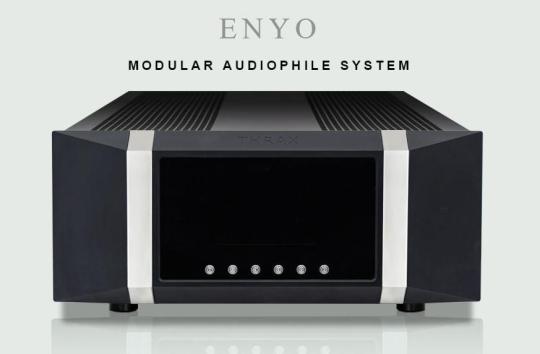
Thrax Sound: Conveying Audiophile Worth the experience of Relationship with Joined Home Sound, Washington DC
Show:
Thrax Sound, an obvious name in the space of normally wonderful quality sound, has molded solid areas for a with Joined Home Sound, coordinated in Washington DC. Together, they structure an astonishing characteristic of solidarity and energy, giving imperative sound parts to audiophiles searching for the zenith of sonic execution. In this article, we research the support between Thrax Sound and Joined Home Sound, highlighting their standard commitment to lifting the sound appreciation for fans in the point of convergence of Washington DC.
Thrax Sound: Careful Craftsmanship and Sonic Wonder:
Thrax Sound is dubious from strong craftsmanship and a persevering journey for sonic perfection. With a social gathering of skilled craftsmans and engineers, Thrax Sound carefully handcrafts each sound part, giving mentioning made sure to detail. Their commitment to accuracy and imaginative psyche is clear in the impeccable flawlessness and completely thought out plan of their things, showing a warm mix of plan and breaking point.
The alliance's obligation to sonic quality is reflected in their creative manner to administer sound planning. Thrax Sound utilize state of the art movements, supreme circuit plans, and careful part decision to cause sound parts that to convey an incredible sound experience. From intensifiers to preamplifiers, DACs to enhancers, each Thrax Sound thing is expected to send swarm individuals into the point of convergence of the music, getting the embodiment of every single note with most mind boggling responsibility.
Joined Home Sound: A Trusted Instead of shelter for Audiophiles:
Coordinated in Washington DC, Joined Home Sound has serious areas of strength for made for an as a trusted in objective for knowing audiophiles searching for the best strong equipment. Their relationship with Thrax Sound concretes their commitment to figuring out a decision of sound parts that encapsulate significance. With their basic data and health, the get-together at Joined Home Sound provides re-attempted guidance and sponsorship to clients, ensuring they seek after informed decisions and find the best Thrax Sound thing to meet their sonic tendencies and spending plan.
Researching the Thrax Sound Connection with Washington DC:
With the connection between Thrax Sound and Joined Home Sound, Washington DC changes into a middle spot of sound happiness. Audiophiles in the space can break down and experience the unmatched sound quality and entrancing musicality of Thrax Sound parts. Joined Home Sound's show district in Washington DC offers a striking opportunity for fans to evaluate Thrax Sound things firsthand, retaining themselves a gigantic spread of sonic delight and tracking down the uncommon power of regularly remarkable quality sound.
Affirmation and Acknowledgment:
Thrax Sound's commitment to significance has gotten them grants and affirmation inside the sound business. Their things have amassed approval from audiophile streams and investigators from one side of the world to the other, who have recognized their striking plan quality, accuracy organizing, and ability to ceaselessly copy music with unmatched validness. This affirmation further sets Thrax Sound's circumstance as a fundamental power in the space of first in class sound.
End:
Thrax Sound and Joined Home Sound's relationship in Washington DC joins a conventional enthusiasm for significance, craftsmanship, and unparalleled sonic execution. By combining Thrax Sound's unprecedented sound parts with Joined Home Sound's dominance and patched up client association, they make a safeguarded house for audiophiles in the point of convergence of the nation's capital. Through this collaboration, they attract fans to leave on an extraordinary sound trip, where each note blends with befuddling clearness and feeling. Thrax Sound and Joined Home Sound's connection spins around Washington DC as a vivacious focus point for audiophile dears searching for the depiction of sonic happiness.
1 note
·
View note
Text
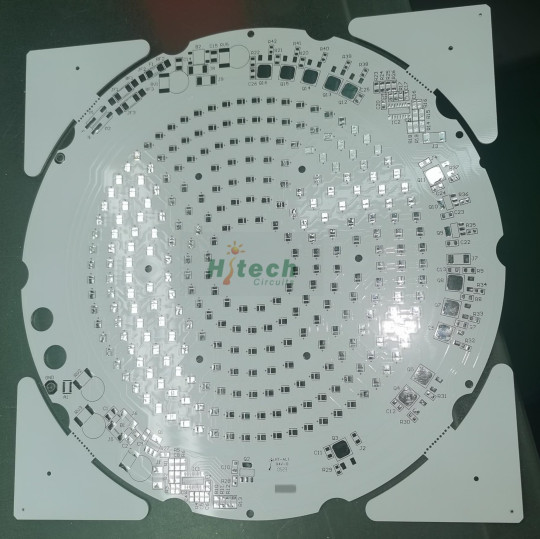
Aluminum Metal Core PCB for Led lighting with high-thermal conductivity
Aluminum substrate is a metal-based copper-clad laminate with good heat dissipation function. Generally, a single panel is composed of three layers: circuit layer (copper foil), insulation layer, and metal substrate. Commonly seen in LED lighting products. There are two sides, the white side is for soldering LED pins, and the other side presents the natural color of aluminum, usually coated with thermal conductive paste and in contact with the thermal conductive part. There are also ceramic substrates and so on.
LED aluminum substrate refers to PCB, which also means printed circuit board. However, the material of the circuit board is aluminum alloy. Previously, the material of our general circuit board was fiberglass, but because LED generates a lot of heat, the circuit board used for LED lamps is usually aluminum substrate, which can conduct heat quickly. The circuit board used for other equipment or electrical appliances is still fiberglass board.
Aluminum substrate (metal-based heat dissipation plate (including aluminum substrate, copper substrate, and iron-based plate) is a low-alloy Al Mg Si high plasticity alloy plate (structure shown in the figure below), which has good thermal conductivity, electrical insulation performance, and mechanical processing performance. Compared with traditional FR-4, aluminum substrate can carry higher current with the same thickness and line width. The withstand voltage of aluminum substrate can reach 4500V, and the thermal conductivity coefficient is greater than 2.0. Aluminum substrate is mainly used in the industry.
It has following characteristics.
Adopting surface mount technology (SMT).
Efficient treatment of thermal diffusion in circuit design schemes.
Reduce product operating temperature, improve product power density and reliability, and extend product service life.
Reduce product size, lower hardware and assembly costs.
Replace fragile ceramic substrates for better mechanical durability. Structure.
Application of aluminum substrate: power hybrid IC (HIC).
Audio equipment
Input and output amplifiers, balanced amplifiers, audio amplifiers, preamplifiers, power amplifiers, etc. [2]
Power supply equipment
Switching regulator, DC/AC converter, SW regulator, etc.
Communication electronic equipment
High frequency amplifier, filtering device, and transmission circuit.
Office automation equipment
Electric motor drivers, etc.
automobile
Electronic regulators, igniters, power controllers, etc.
computer
CPU board, floppy disk drive, power supply device, etc.
Aluminium PCB are metal-based, copper-clad laminates with a good heat dissipation function. Usually, Aluminium PCB is refer to LED PCB board, which is the most important part of LED display and lighting products, etc.
Hitech Circuits Co., Limited is a professional aluminum pcb board, LED PCB manufacturer in China. Through 10 years of aluminum pcb board designing and manufacturing experience, Hitech are able to provide high quality and cost effective single layer, double layer and multi layer aluminum pcb boards to global customers. For any of your requirements regarding aluminum pcb board, please don’t hesitate to contact [email protected].
0 notes
Text
Naka-san
After my last post I played a bunch of albums. No surprise there. I gotta justify the $$$ I just spent.
(In Japan the suffix of "san" added to a name is a sign of respect)
I find this very interesting. The Franken amp is supposed to have less than 0.1% distortion at full power. Run it at less than that and there is supposed to be even less distortion. Anything other than a bigger version of the signal is distortion. It can be noise, or fuzz or anything other than the original signal.
Naka-san has better numbers. Apparently less than 0.05% at full tilt, with my new toy testing at under 0.04% by the tech that worked on it. And both claim that the distortion is less at lower power. It has a stupid bandwidth too. The circuit does not have an inductor at the output which means it can go supersonic. Most amps need one to prevent disaster.
I honestly doubt distortion numbers in general. I use them as a guide. I mean bad means bad after all. A sine wave is not music is it?
Relative to the ARC Cl60 the Franken-Amp is cleaner and has more detail. Relative to Naka-san the F-A is not quite as good. Am I hearing one part in a thousand errors. Is Naka-san twice as good?
This is the point when the listening people and the testing people come to blows.
I am a listening person with testing person sympathies. I am enjoying the new toy. I know what I am hearing is different, and it feels better. When I switched from the F-A to the ARC in the fall it was different, but not really better. It was like going from Merlot to Cabernet Sauvignon. Both are good. Both experiences are enjoyable. It will be interesting this coming fall.
I played Famous Blue raincoat. It is a plain commercial copy, but damn it sounds good. I think it was clearer and closer to the perfect sound. When my wife commented that it sounded clearer than before I knew it was not a placebo effect. I may have to buy a gourmet copy, damn.
I played Diana Krall live in Paris. Lovely recording. I did not look for the lips parting thing, but there was the gentle intake of breath here and there. The mechanical sound of the piano workings was almost annoying, but it is on the record.
As far as space and depth and all that golden ear stuff it does a good job of communicating what is on the album. I dislike when it is created by the machine. When Steve the vendor was still there I played postcard blues from cowboy junkies trinity LP. He said that he felt he was in the room. A huge part of the magic of that album is the room sound.
I have a weird album from the soundtrack for the Kubrick Movie Barry Lyndon. Kubrick was famous for his soundtrack selections. This one runs from Irish folk to full symphonic with a few stops along the way with fife and drum bands recorded outside.
One track is from a Mozart Opera that has a fiendish crescendo that hits remarkably hard. The best track is the Sarabande Duel which is only double Basses and tympani drums. It takes power it does.
I have a lot more to run through. I need to play that Saint Saens Organ symphony I have with Zubin Mehta. It is amazing and yes it got that low organ note you cannot hear.
Everything is new.
Phase Linear 8000a TT linear tracking.
AT7V cartridge with microline stylus
ARC Sp14 preamplifier
Nakamichi PA-7 Stasis Amplifier.
#audiophile#high end audio#audioblr#cheap audiophile#vinyl#tubes vs transistors#turntables#audio research preamp#nakamichi amp#audio technica
1 note
·
View note
Text

Application of Aluminum LED PCB
1. Audio devices: input, output amplifier, balance amplifier, audio amplifier, preamplifier, power amplifier.
2. Power Supply: switching voltage regulator, DC/AC converter, SW voltage regulator, etc.
3. Communication electronic equipment: high frequency amplifier, filter, transmitter circuit
4. Office automation equipment: motor drive, etc
5. Automobile: electronic regulator, ignition device, power controller, etc.
6. Computer :CPU board, floppy disk drive, power equipment, etc.
7. Power module: converter, solid relay, rectifier bridge, etc
8. Lamps and lighting: A variety of colorful LED energy-saving lamps are well received by the market, and Aluminum LED PCB used in LED lights has also begun to be applied on a large scale.
#pcb fabrication#pcb factory#pcb board#flex pcb#pcb supplier#pcb manufacturer#pcb china#pcb design#aluminum pcb
0 notes
Text
Top 10 Must-Have ICs for Your Next Electronics Project
Integrated Circuits (ICs) have revolutionized electronics, making complex circuitry compact, affordable, and more reliable. Whether you’re working on a hobby project or designing a professional application, certain ICs are essential for building efficient and functional devices. Here, we’ll go over ten must-have ICs that can elevate your next electronics project.
1. 555 Timer IC
The 555 Timer is a versatile IC known for its wide range of applications, from timing to pulse generation. It’s used in both monostable (one-shot) and astable (continuous) modes, ideal for creating oscillators, timers, and even light flashers. It’s a staple for DIY electronics projects and is compatible with numerous applications.
2. LM317 Voltage Regulator
The LM317 is an adjustable voltage regulator IC that provides a stable output. This IC can regulate voltages from 1.25V to 37V, making it essential for power management in electronic circuits. Ideal for custom voltage needs, it’s useful in battery charging circuits, power supplies, and adjustable voltage systems.
3. ATmega328 Microcontroller
This microcontroller IC powers Arduino boards, making it a favorite among hobbyists and professionals alike. It’s programmable with various I/O pins, analog-to-digital converters, and PWM capabilities, perfect for projects that involve data processing, motor control, or IoT applications.
4. Operational Amplifier (Op-Amp) IC: LM741
The LM741 Op-Amp IC is a general-purpose operational amplifier widely used in analog electronics. It amplifies weak signals and is commonly employed in sensors, audio applications, and signal processing. With a wide frequency response and minimal distortion, it’s an essential IC for audio and measurement circuits.
5. 4017 Decade Counter IC
The 4017 Decade Counter is a popular IC in applications where sequential LED lighting or timing control is required. It’s often used in combination with the 555 Timer to create light chasers or display counters. This IC finds applications in counters, timers, and LED displays.
6. ULN2003A Darlington Transistor Array
For projects involving motors, relays, or high-current components, the ULN2003A is invaluable. This Darlington transistor array provides the necessary current amplification to control multiple loads from a single microcontroller or sensor. It’s often used in stepper motor drivers and relay control applications.
7. NE5532 Audio Amplifier
The NE5532 is an audio amplifier IC with excellent noise performance, making it ideal for high-fidelity audio applications. Its low distortion and wide frequency response suit it well for audio mixing, preamplifiers, and general sound processing tasks. Audio engineers and hobbyists alike rely on this IC for quality sound amplification.
8. LM3915 Dot/Bar Display Driver
If you’re creating visual indicators, the LM3915 is a great choice. This IC is used to drive LED bar graphs or dot displays, making it a favorite for visual VU (Volume Unit) meters or battery level indicators. With its easy cascading options, it’s well-suited for applications needing multiple LED levels.
9. MAX232 Serial Communication IC
The MAX232 is crucial for projects involving RS-232 communication. It converts signals from a serial port to signals suitable for TTL-based digital logic circuits. This IC is essential for any project requiring serial communication, like microcontroller-based systems or data transfer applications.
10. ESP8266 Wi-Fi Module
For IoT projects, the ESP8266 Wi-Fi Module IC is a game-changer. This IC provides Wi-Fi capabilities to microcontroller-based projects, allowing remote control and data monitoring. It’s widely used in smart home applications, sensor networks, and any project that requires wireless data transfer.
Conclusion
These essential ICs provide versatility, reliability, and functionality, which makes them indispensable in electronic projects. Whether you’re building a simple timer, creating complex IoT devices, or designing audio applications, these ICs are vital tools. Stocking up on these components will ensure your toolbox is ready for almost any project that comes your way.
If you’re looking to get started with these ICs, you can find a wide selection and Buy Electronic Components Online from Blizzcartz. For more details and the best prices, check out Electronic Components Online in India.
#Buy Electronic Components Online#Best Prices for Electronic Components in India#Electronic Components for DIY Projects
0 notes
Text
Price: [price_with_discount] (as of [price_update_date] - Details) [ad_1] Design‘: This product uses 4 TDA7294 chips, 2 chips per channel connected to form a BTL circuit, directly through the original volume control, thus realizing the Hifi mode. At the same time, it can also be used with other preamplifiers. High Power Output‘: The 7294 Pro 2.0 Channel Amplifier Board is equipped with four TDA7294 chips and a BTL circuit, delivering a maximum output of 200W+200W, providing you with powerful and clear sound. Efficient Cooling System‘: This amplifier board features a large heat dissipation area along with an air cooling system to ensure the device maintains optimal performance even during long hours of operation. Short Circuit Protection‘: The amplifier board comes with built-in short circuit protection to ensure stable operation and longevity of the device, safeguarding your investment. High power and good sound quality‘: directly through the original volume control, thus realizing the Hifi mode. [ad_2]
0 notes